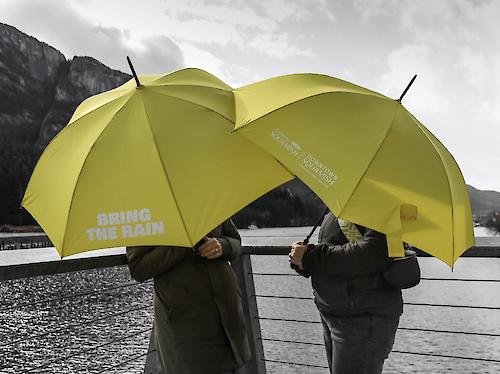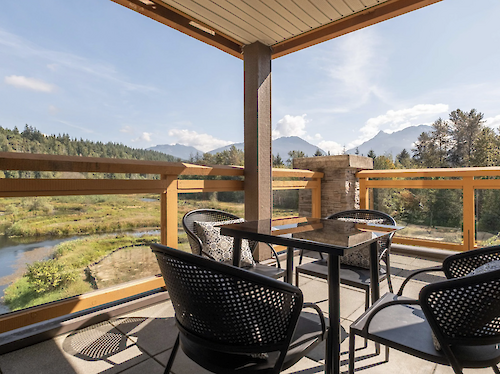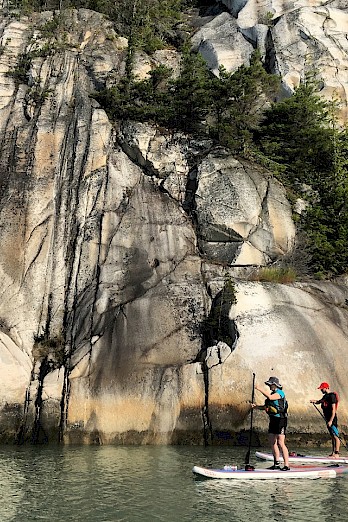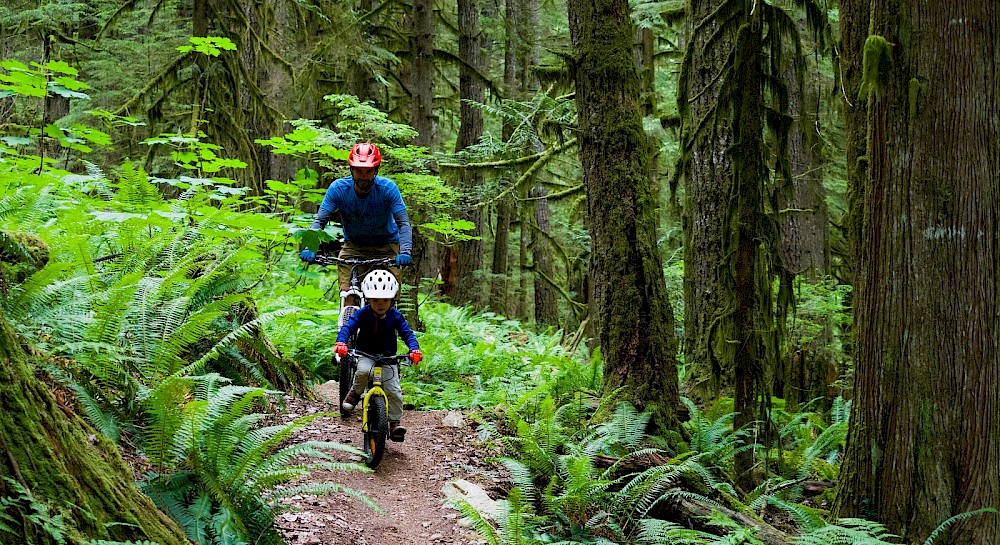Stand-Up Paddleboarding






Find balance, leave stressors in your wake and soak up the scenery ahead.
Set out for a tranquil lake float or wind your way along the untamed waterways of Howe Sound, one of Canada’s largest fjords.
Originating in Hawaii, this take on traditional surfing has been widely adopted, becoming one of the fastest-growing paddle sports in the world. Stand-up paddleboarding (SUP) provides a fantastic workout for core strength and fitness and is an immersive experience that connects us with nature, allowing us to see landscapes and wildlife from an entirely new perspective.

Where to go
Alice Lake Provincial Park
The largest in the Four Lakes loop, Alice Lake is the most accessible for paddle sports. The intimate lake has all the ingredients for a stand-up paddleboarding experience, including calm waters, mountain views, changing facilities and gear rentals during the summer months. Try a multi-sport day and add hiking or mountain biking to the itinerary—there are plenty of trails to choose from there.
Brohm Lake Provincial Park
A larger lake, located 15 kilometres north of Squamish along the Sea to Sky Highway, Brohm is a popular swimming hole in the summer and cold plunge destination in the winter months. Bring your board and head out to explore the beautiful lake. There are also trails in the area for additional adventures. Parking is limited, so arrive early or visit mid-week to secure a spot.
Blind Channel
Dip your toes into ocean paddling and explore Blind Channel, a popular waterway with a marina and boat launch. Depending on wind and tides, you have the option to paddle north toward the Squamish Adventure Centre (with a possible stop at Narwhals Ice Cream stand just after the bridge), or south past the Stawamus Village site, where a welcome figure stands, overlooking the expanse of Howe Sound. As this is a busier area, be conscious of other boat traffic.
Britannia Beach
If you are an intermediate paddler with experience in open ocean, try the challenging “coffee run,” a 9-kilometre one-way paddle south from Blind Channel to Britannia Beach. With the right planning, the trip takes a little over two hours and paddlers are often rewarded with marine life, spectacular views and a hot cup of coffee at Chatterbox Cafe upon arrival. The paddle requires specific winds and tides, as well as two vehicles, so plan ahead or take a guided tour with local experts.
Sea to Sky Marine Trail
The Sḵwx̱wú7mesh Úxwumixw (Squamish Nation) refer to the sound as Átl’ḵa7tsem, which translates to “paddling up the sound.” Advanced paddlers with experience in dynamic marine environments, and the proper safety equipment and training can venture out on an overnight or multi-day paddling trip to a network of seven well-maintained marine campsites. Paddle beside Sḵwx̱wú7mesh village sites and traditional harvesting grounds as you camp near iconic landmarks that hold ancient stories of sea serpents and other supernatural beings. Spend the night in an oceanfront campsite overlooking breathtaking beauty to feel the true power of the lands and waters. These sites are first come, first served, so plan accordingly.
Useful information
Never leave shore without wearing your appropriately sized, Canadian-approved PFD and other essential life-saving gear
Good instruction keeps you safe and sets a solid foundation as you progress into the more dynamic disciplines of the sport. A lesson may also be the difference between a good experience and a great one
The water is calmer, there are fewer obstacles and depending on the time of year, it's often warmer if you take an unexpected plunge into the water.
As a rule of thumb, paddlers should be early on the water, early off the water. Generally, speaking, the wind is calmest in the mornings and evenings. But this can vary depending on the weather systems, so never venture out without viewing the forecast. Ocean paddlers should aim to return as the tide is coming in, though that doesn’t necessarily mean the waters will be calmer.
Pack your treats in a dry bag so they don’t get wet.
If you are paddling on the ocean, never go alone.
The weather in Squamish can change quickly and it can get cold out on the water. Wear sweat-wicking or neoprene layers to stay warm and dry. Bring a hat and shades, and always carry extra layers in a dry bag to change into in case you fall in the water.
When
Know Before You Go
Shops, tour providers & outfitters
Set yourself up for success with gear, guides and some local know-how.
Hear the call of the wild beckoning you.
Whether you are looking to push limits, enjoy a fun day out or just appreciate the views, you will not lack inspiration.











